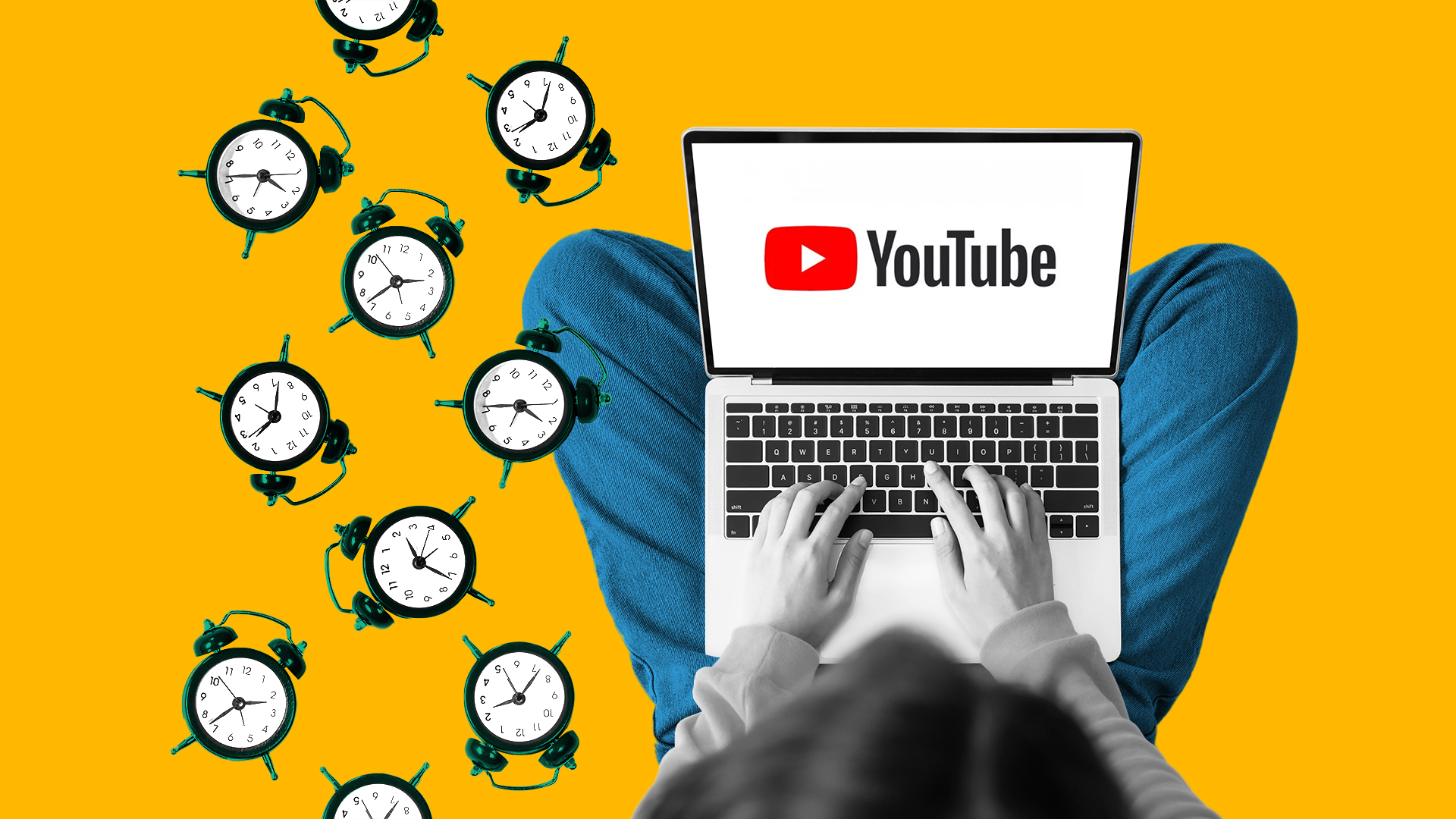TikTok vs Instagram: Key Differences for Brands To Know

With so many different social media sites, an ever-changing trend landscape, and a neverending onslaught of new features, sometimes we need a refresher on what distinguishes these platforms from one another. When we look at TikTok vs Instagram, there are key similarities and distinctions marketers need to know about to advertise effectively on them.
From best practices to ad specs, audience demographics to content styles, there’s a lot to cover — so let’s get started.
What Is TikTok?
TikTok is a video-first social media app known for its engagement. Its For You page is a seemingly never-ending stream of video content. On the platform, videos are generally short and punchy, and they’re often part of bigger trends like hashtag challenges. Having been downloaded 2.7 billion times worldwide and transformed the social media landscape forever, it’s clear that TikTok — and its parent company ByteDance — is a force to be reckoned with.
TikTok marketing involves many components, all with the end goal of reaching hundreds of millions — possibly more than a billion — people. For many, their objective is to go viral and end up on the For You page. To that end, there are tricks that can be used to help your brand stand out. For example, harnessing current trends and ensuring your content feels native to the platform are best practices to include in your strategy.
TikTok, like other social media platforms, offers a great deal of data to users. This information allows you to see what’s working, where your audience is based, and when they’re most active.
Audience Demographics
TikTok offers a broad appeal across social media users of all ages. According to Statista, TikTok users are more likely than other social media platform users to buy a product because an influencer or celebrity advertised it. Plus, TikTok users follow companies and engage with their posts more often than users on other platforms.
The New York Times has called TikTok “the search engine for Gen Z.” So if you’re looking to engage with a younger audience whose interests tend toward pop culture, happy relationships, having a good time, and success — and who also spend about 45 minutes (which seems low, if we’re being self-aware honest) a day on the platform — consider TikTok.
User Behavior
Typically, TikTok videos are short, often hovering around the 15-second mark. However, some more venturesome advertisers have been breaking the mold lately. A funny, engaging ad for Hilton showed that even a 10-minute ad could hold the attention of TikTokers if it was relevant, high-quality, and a little daring.
Types of Content
While a traditional “Following” feed does exist in the app, most users watch TikTok videos in a seemingly endless stream called the For You page (often referred to by users as the “fyp”). These videos are chosen by the algorithm (we’ll get into that more later) based on the content you’ve engaged with before. TikToks do well when they feel authentic, like user-generated content (UGC) or UGC-like videos. Lifestyle content, like short recipes and hacks, tends to be some of the most popular content. As mentioned above, making use of trends — like the catchy audio that’s already on your Feed — is a smart strategy to make sure your content feels like a TikTok, not an ad.
- Related: When Is the Best Time To Post on TikTok?
Tools for Business
TikTok is an important part of any business’s social media video plan. So make sure your ads fit TikTok’s video ad specs, with a vertical format and the strategic use of captions and graphics. You’ll also want to outline your posts in a TikTok content calendar to ensure consistency.
Many advertisers use TikTok as a platform to test their video creative before they share it across other platforms. And since you’ll want your videos to be seen by as many people as possible, you’ll want to keep the ideas to help you go viral in mind at all times, remembering emotion and enjoyment are the key drivers.
TikTok Algorithm
The TikTok algorithm is a series of algorithms that provides you with videos it thinks you’ll enjoy most. The goal is to keep users glued to the app for as long as possible, so it wants to give you videos you’re actually interested in.
When you log into TikTok for the first time, you’ll see a generic video stream. But this Feed changes and updates quite quickly as you watch videos. If you, for example, watch stand-up videos and vegan food clips, you’ll soon see a mass of further stand-up comedy and plant-forward chefs.
The algorithm will continue to mold your content as you contribute your likes and dislikes. To make this happen, the TikTok algorithm takes into account signals, which you provide through your actions, such as your prior likes, comments, and shares. It also considers your language settings, geographic location, specific areas of interest, and more. The algorithm will avoid showing you content it deems low-quality or duplicative of what you’ve already seen.
What Is Instagram?
While it’s been a minute, the visually powered app Instagram permanently transformed social media, too — which is why Meta (then Facebook) paid $1 billion for it when it acquired it in 2012. While it began as a photo-sharing app when it launched in 2010, the site has shifted its emphasis to video. That began with standard videos and Instagram TV (IGTV), both of which have been sunsetted and replaced by Reels, which are incredibly similar to TikTok videos.
There’s also Instagram Stories, an additional feature that acts like a platform to share existing and new content, primarily from people you follow and advertisers. Instagram Reels, however, tend to be from people all across the platform, depending on what the algorithm thinks is a good fit for you.
With over 2 billion monthly unique users, it’s worth developing a deeper understanding of what content works on Instagram and how. Videos can be featured as in-feed ads or Reels, and each has its uses. For maximum effect, time your Instagram posts to make sure they’re reaching your audience as effectively as possible.
Audience Demographics
While roughly half of Instagram’s users are 18-34, don’t forget to create content for the older users, too. When it comes to lifestyles, its users tend to be engaged in popular culture, interested in food and dining (as well as cooking themselves), health and fitness, and travel.
User Behavior
The average user spends about 29 minutes a day on Instagram, making it a compelling choice for advertisers. According to Insider Intelligence, 15% of all consumers begin their shopping journey with an Instagram search. The platform’s engaging visual interface has turned it into the digital equivalent of glossy magazines highlighting the latest trends.
Types of Content
Instagram offers a plethora of content and ad options, including the chance to craft your own business filter. So spend some time acquainting yourself with the platform to create a holistic approach to marketing your brand on Instagram.
Tools for Business
When it comes to Instagram video marketing, the platform is great for driving users to your site. With accurate Instagram video specs, your content can feel native to the site and is more likely to succeed.
You’ll also need to spend time thinking about your brand’s narrative. Instagram is a visual platform, so you’ll need to craft a creative strategy filled with Instagram best practices in order to connect with your target audience.
Instagram Algorithm
Instagram’s algorithm is a series of formulae that determine what each user is most likely to enjoy. With the goal of keeping users engaged on the platform, it uses signals to find relevant content. For example, your post’s success will vary depending on what time you post. If you post while most of your followers are online, you’re more likely to have a higher-performing post. This is why it’s essential to find the best time to post on Instagram through your profile analytics.
Summary of Key Differences
While these two platforms are similar, there are key differences between TikTok and Instagram. The largest difference is the format. You can select different posting types on either platform, but they appear differently on each of the feeds.
Another difference is the immediate experience. TikTok’s For You page is filled with videos the algorithm thinks you’ll like, regardless of whether or not you follow the page. If you want to see posts exclusively from your friends, you’ll need to click into a different tab. While on Instagram, you’re more likely to see posts from accounts you already follow. Then, if you’re feeling adventurous, you can click into the Explore or Reels tabs to find new content.
Additionally, the platforms have varying expectations from users. Typically, Instagram profiles are filled with curated content, while TikTok creates a space for users to try new things. Like we mentioned above, that’s why many brands use TikTok as a place to test new content types before airing them on other platforms.
Importance of Using TikTok and Instagram
The TikTok vs Instagram conversation isn’t really an either/or situation. Instead, it’s essential to look at these platforms as a powerful combination. By using both, you can reach a wider audience, connect with your overlapping audience on multiple platforms, and provide multiple content types to build your brand’s awareness.
Make Social Media Videos at Scale
Making content for several platforms within an omnichannel marketing strategy can feel overwhelming, but you don’t have to do it alone.
As both a TikTok partner and an Instagram partner, QuickFrame is familiar with the features and best practices of both platforms. We’ll connect you to leading video makers around the world to help create custom video content for your brand.
Contact us today to learn more about TikTok video production and Instagram video production.
TikTok vs Instagram: Final Thoughts
By including both TikTok and Instagram in your video marketing strategy, you’ll be able to connect with your audience more effectively. Since every social media platform varies (at least a little bit) from each other, you’ll be able to test more content, find out what works best for your audience, and optimize your content across platforms.
Do More with Video
Learn how we can help you produce more quality videos affordably and at scale.


